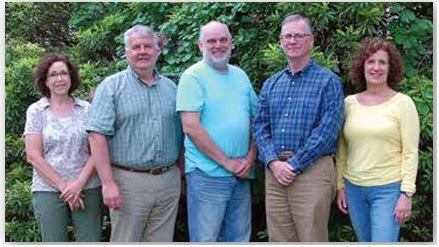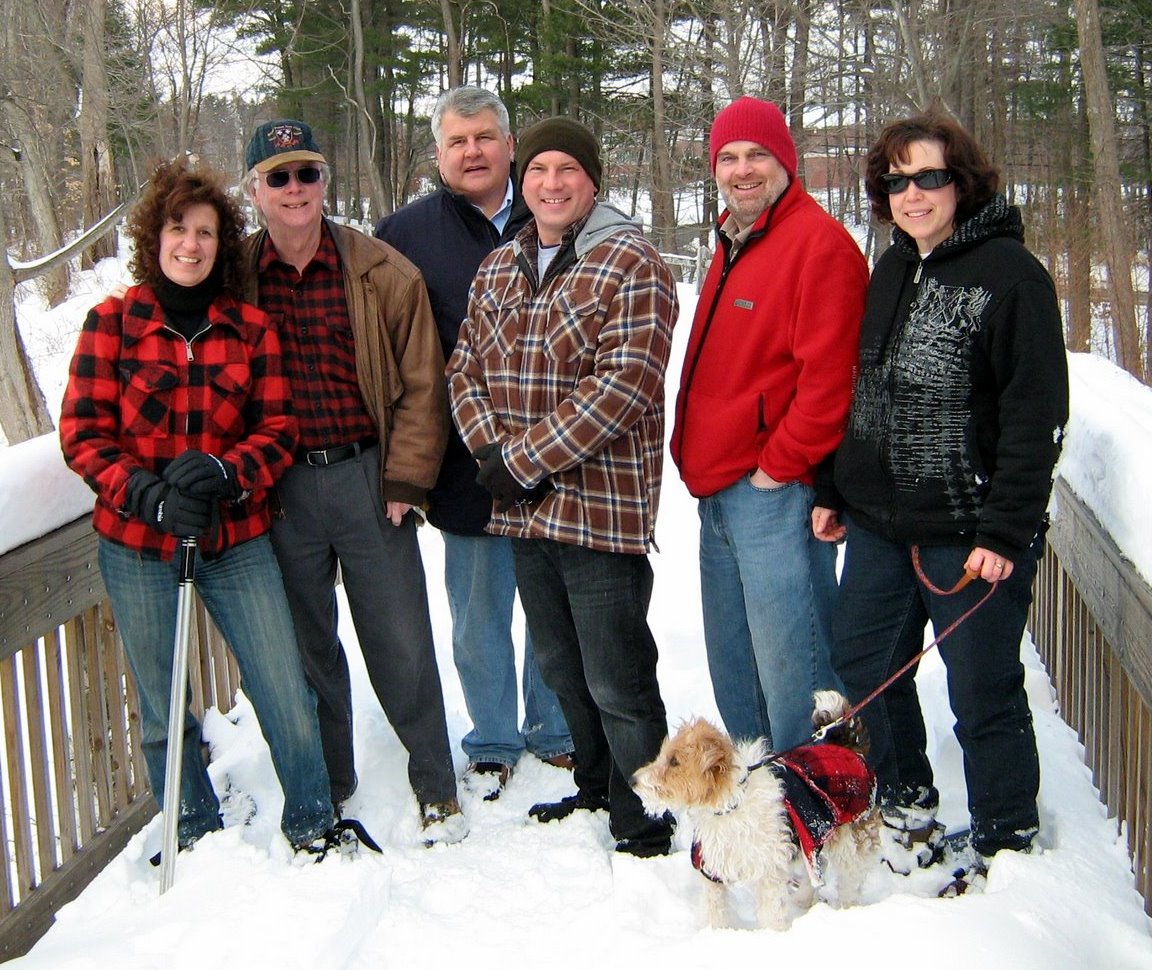** These are the comments I had hoped to read during the event on Saturday September 6th., but I forgot my notes and had to wing it, and since the Mayor had showed up, be briefer than planned. **
I want to thank everyone for coming today and joining in this celebration.
First off, you are standing on a special place, the Shelton Lakes Greenway. It is in the heart of our community, near our center of education, and these lands are protected forever from development. Where we are today would not be possible without the hard work of many that followed a common direction.
This area could have become something far different than what you are enjoying now. In 1965, a nearby parcel on Nells Rock Road of over 50 acres was purchased with an eye toward it's potential as a town incinerator site. Two years later in 1967, a parcel of 50 acres was purchased that was subsequently developed as the Shelton High School campus in the early 1970's. It was a logical assumption for Shelton to consider locating services in the geographic center of the city, such as a new Police Station, or Senior Center, or EMS facility.
In addition to municipal ideas on how to utilize all the available lands in this area, there were private enterprise ideas too. Conceptual drawings were being drafted that showed a large development of homes strung among a 100's of units similar to Oronoque Village in Stratford, or Heritage Village in Southbury. There was a gas station, convenience store, etc. However, a different direction emerged than either of these public or private directions, one that saw value in the environment and it's potential for this area.
A significant amount of this area's acreage was owned by Bridgeport Hydraulic Company. It was determined that certain lands were "Class 3" watershed property, in essence "excess" and could be sold off by the water utility. Even the three former reservoirs were no longer needed. A milestone moment was coming on the horizon, and as with most significant accomplishments, it required everyone to move in a common direction.
The legal parcel of land which includes this location on which we are standing, is 79 acres. It is a significant size and covers a large area including the former reservoir on Nells Rock Road with it's dam and gatehouse from 1915. A BHC employee names Douglass Stewart was instrumental in gaining the City's ownership of this property, and we informally refer to this Open Space parcel as "Stewarts Woods". The City closed on the acquisition on October 28, 1983. The price? Zero. It was a gift from BHC to the City and inspired others to share in the environmental direction.
After a good deal of preparation, an Open Space planning document was adopted in 1992 that recognized the benefit when several parcels come together and amalgamate to create corridors, or Greenways. Such a corridor was identified in this location and referred to as "Shelton Lakes" due to the 3 reservoirs that were sprinkled through it's core. In those days before satellite images on digital maps via mobile phones, assessors maps were cut apart and taped together again to create a larger picture that could be rolled out as a presentation for meetings - allowing easier examination of where parcels would need to be acquired in order to accomplish the vision.
The Planning and Zoning Commission adopted the vision of the Open Space Plan, as did the Board of Aldermen. An Open Space Committee was formed with representatives from the PZC, BOA, IWC, public at large, and worked to identify open space targets here and elsewhere in town. Subdivisions such as Toll Brothers on Independence Drive, or Blakeman Construction in Huntington Woods - had the Open Space set-aside called for in the subdivision regulations work to accomplish the vision. Aldermen approved pursuit of acquisition for parcels, the public voted overwhelmingly to support costs via bonding, even obscure methods such as taking of property for delinquent taxes occurred with the City Attorney. This collective work took persistence.
In that Open plan, there was referenced the idea of passive recreation and enjoyment of the environment, such as hiking trails, and those were created with many volunteers on the Trails Committee over the years, but there was an even greater vision in the wings.
Terry Jones was co-Chairman of the Conservation Commission at the time, and had been to Stowe Vermont where he saw their community's recreation path. It was a firm surface level walking path, not unlike some of the rails-to-trails style paths in the region. It connected their developed town area of Stowe with the countryside. Perhaps such an amenity could be created in Shelton and connect the colonial Huntington Center area with the more urban downtown Shelton area via the countryside? Yes but it would require even more partners following the same direction.
The Board of Education was constructing a new school campus, and the Building Committee incorporated the RecPath into the landscape's design. Dam Spillways had to be crossed with bridges, and we worked with the town of Monroe to obtain a grant from the US Forest Service to accomplish that. There were road crossings and ADA grades that we wanted to maintain, and we had help from private professionals who donated services to help prepare wetlands and zoning applications. Accessory projects such as sign kiosks at entry points became Eagle Scout Projects. The Shelton Land Trust constructed a large segment through their property on Lane Street. When road signals were upgraded, the City Engineering Department worked with DOT to enable the pedestrian crossings, and on secondary roads the Police Department painted the pedestrian zone markings. When summer activities for Parks and Recreation ended, they assisted with some initial clearing of the path, notably on the SIS school campus and Oak Valley Road. The vision caught fire with outsiders via funding from the DEEP for Recreational Trails Grants, Iroquois Gas Company with their Community Grants. Resident Basil Dikovsky joined the vision and donated a portion of his property to allow the RecPath to be accomplished at an accessible grade rather than meander awkwardly. State Representative Richard Belden was able to obtain a few thousand dollars that we utilized to commission a design for our RecPath logo that allowed us to "brand" or set apart this as something unique among the general network of trails. EVERYONE was moving in the same direction.
What began as a n seed of an idea in the 1990's is completed construction in 2012. The Shelton Lakes Recreation Path germinated from witnessing a recreation path in Stowe VT (which happens to be near a similar referenced "Rte 108") that connected the urban and suburban landscape.
Substantial property was acquired through the years, notably the purchase of lands from the Bridgeport Hydraulic Company (now Aquarion) which was closed on formally in 1998. Further land came from subdivision set-asides, taxes owed, outright purchases. Grants were involved in some cases, deed restrictions put in place in most cases. Hiking trails were constructed, timber bridges were put in place, contractors helped in heavy work - but most of the legwork was done by volunteers.
Trails Committee members held countless meetings for planning, attended physical work parties in the field or led guided hikes to illustrate where the routing was, and attended Shelton Day to drum up the promotion of the activity.
The Conservation Commission kept at the role of facilitating grant applications for land acquisition, bridge construction, trail construction, and an annual budget used for professional services of surveys, engineering studies, wetlands applications, and materials purchases.
The Planning & Zoning Board and Inland Wetlands Commission attended to various applications over the years for work that required permitting such as wetlands crossings and bridge construction. The City Engineer assisted in design and co-ordination of structures such as bridge and weirs.
The Board of Alderman approved of our plans and direction from a general sense, and the funding or applications for grants from a detailed perspective. Their authorization for land acquisitions was a footing upon which future work could take place.
Dean Cawthra and the Parks & Recreation Dept assisted in helping clear out the routing in several locations around the school campus. Also as Tree Warden, Dean had perspective in defining what direction such areas of routing might take.
I want to next thank some folks who are professionals that donated services to this effort: Terrance Gallagher, Jim Tate, Jim Swift - all three as Engineers and Landscape Architects contributed considerable value from a professional perspective.
Finally, a very big thanks to Commissioner Bill Dyer who was a "Clerk of the Works" for the construction of this path for several years, interacting with contractors and city agencies. Without his involvement and dedication to the task being completed, we wouldn't be here today. Thank You Bill.
Subscribe to:
Post Comments (Atom)



No comments:
Post a Comment